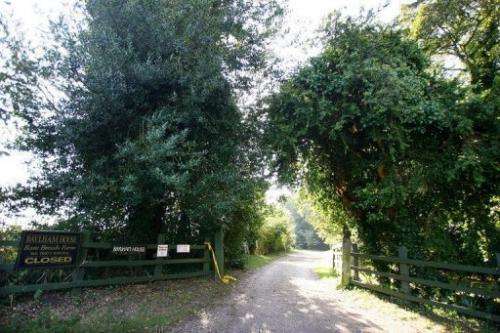File picture of the entrance to a farm in Suffolk, eastern England. The British government convened its emergency crisis committee on Friday to discuss how to contain a fungal disease threatening ash trees that has already wiped out swathes of woodland in Denmark.
The British government convened its emergency crisis committee on Friday to discuss how to contain a fungal disease threatening ash trees that has already wiped out swathes of woodland in Denmark.
The deadly fungus Chalara fraxinea has been present in European ash trees for the past two decades, destroying up to 90 percent of the species in some areas of Denmark, and has now been found in Britain.
Ministers announced a ban on the import of ash trees on Monday as well as restrictions of the movement of the trees, its plants and seeds within Britain, but there were fears it could already have spread.
The crisis has revived memories of Dutch elm disease, which devastated Britain's elm trees in the 1970s. About 100,000 ash trees have been destroyed so far in an attempt to halt the spread of the fungal disease, which first appeared in Britain in February in a consignment of imported trees in a nursery.
Last month it was identified in ash trees in the wider countryside in eastern England.
Britain has about 130,000 hectares (320,000 acres) of predominately ash tree woodland, comprising about 5.5 percent of its woods, with a further 12 million ash trees outside woods and forests, according to the Forestry Commission.
The trees have high conservation value, as their light and airy canopy allows sunlight through to the woodland floor to enable a rich and varied ground flora to grow. This in turn provides food for a wide variety of insects and birds.
Environment Secretary Owen Paterson chaired a meeting of the government's crisis committee, Cobra, on Friday to discuss how to manage the problem with government's chief scientific advisor and forestry and environmental officials.
Speaking earlier this week, Paterson said: "This is a very serious disease that demands action to stop its spread."
(c) 2012 AFP




















